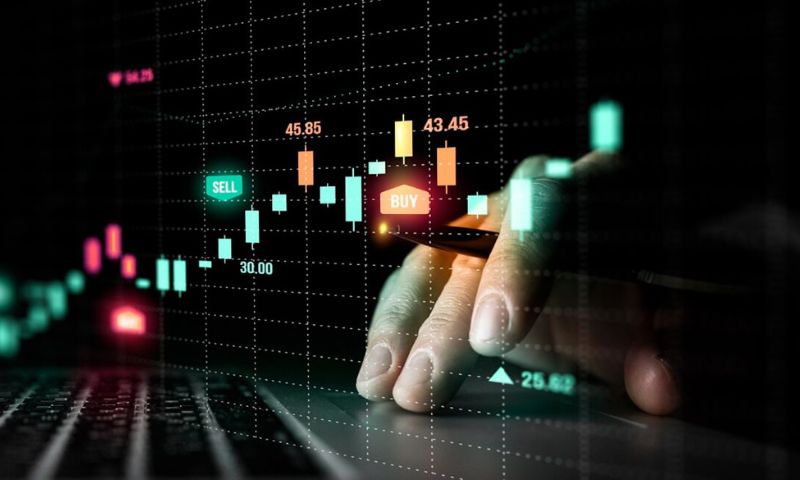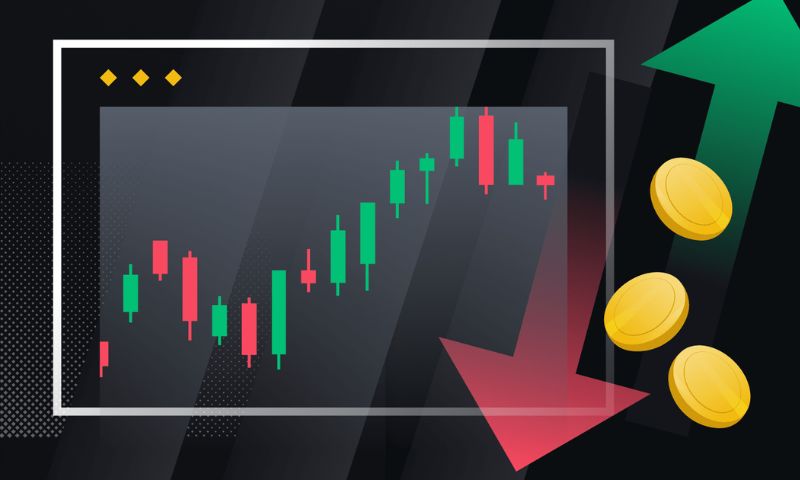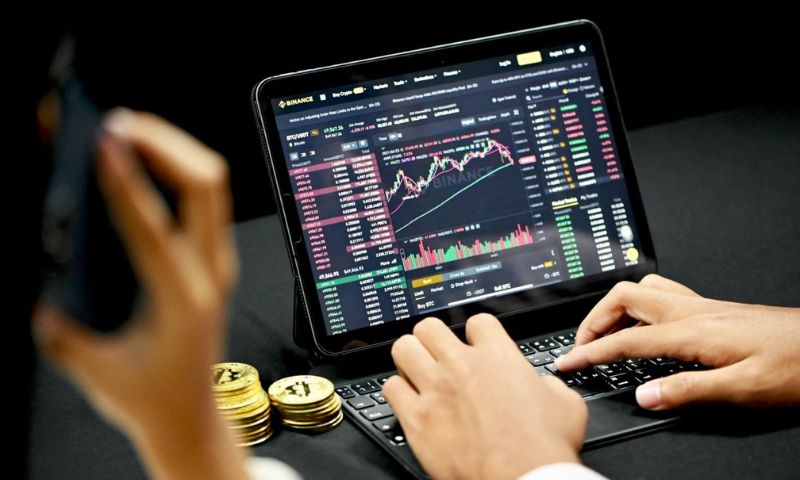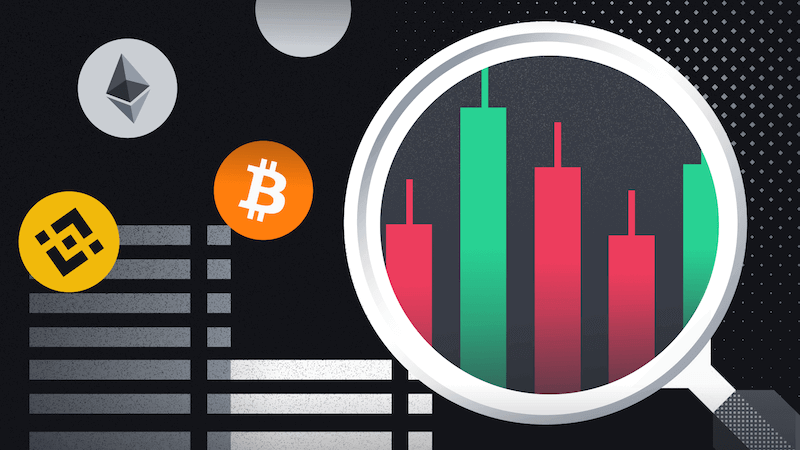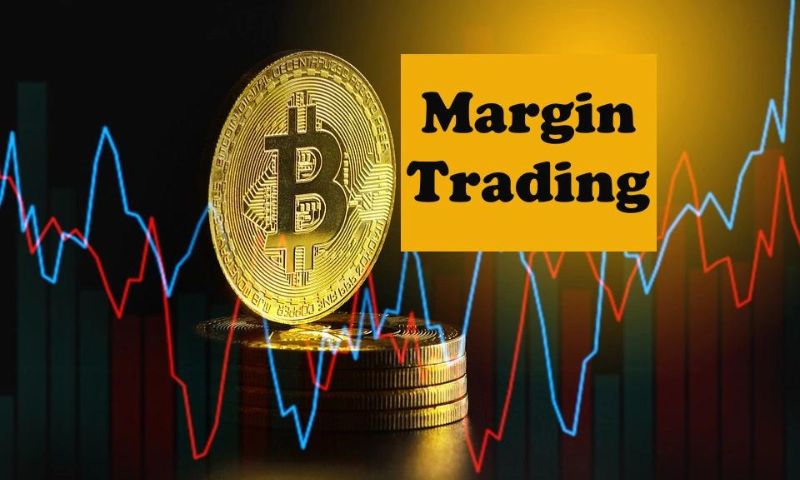Dive right into the world of crypto exchanges with high leverage for margin trading and you’ll find the adrenaline rush of rollercoasters is on par with the potential profits and pitfalls. Now, let’s get real about ramping up your game. Understanding the fundamentals isn’t just smart; it’s crucial if you want to play hard and win big in this high-stakes arena. We’re tearing down the complex lingo and making sense of those sky-high leverage ratios, so buckle up. It’s time to master the mechanics of trading digital currency on steroids.
Understanding the Fundamentals of High Leverage Crypto Trading
Exploring Leverage Ratios in Crypto Markets
When we dive into crypto markets, “leverage” is a key word. Leverage lets you trade more than you own. Think of it as a loan from the exchange to amp up your trades. Let’s say you put down $100 in a 10x leverage trade; here, you’re trading as if you had $1000. If prices go your way, you win big. If they don’t, you could lose fast. High-stake players often chase these high leverage numbers.
Remember, leverage can magnify wins and losses. Choosing the best leverage for crypto trading is like picking the right gear in a car—you must understand your speed and the road ahead. Beginners often start slow, maybe 2x or 3x. Seasoned pros might push limits, trading altcoins or even bitcoin with 10x leverage or more.
The Dynamics of Margin Trading Digital Currency
Margin trading means trading with borrowed money. For crypto wizards, it’s a sharp tool. Before you cast the spell of margin trading, know your potion. Each trade needs an initial sum, the “initial margin.” This is what holds your seat in the game. As trades move, the exchange watches you like a hawk. If your trade’s value drops to a certain point, a margin call happens. Here, the exchange says, “Add more money, or we close your position to stop the loss.”
A good trader knows their liquidation price. It’s like knowing how much water you can take before you sink. Stick to reliable crypto exchanges when margin trading. Your money must be safe. If you trade with care, liquidation stays a ghost story. Funding rates also nip at your heels. They’re like a ticking clock that charges you just for holding the trade open. It can eat into your profits if left unchecked.
So what’s a safe leverage level? It’s like asking: How many chilis make a curry hot? For some, a little heat adds flavor to the dish. For others, it burns. The same goes for leverage. A safe level is tied to your taste for risk and your crypto trading chops.
The best crypto traders are like tightrope walkers. They know each step could be their last. They keep their balance with sharp focus and a clear mind. High leverage crypto trading is the same. You’ll need nerves of steel and a keen eye on the market’s mood.
To swing from the vines of high leverage, you must know the game well. It’s not just boldness—it’s about smart choices, guardrails, and knowing when to step back. The joy of trading comes in the harmony of risk and reward. So start this dance with caution, and maybe, just maybe, you’ll find the rhythm that’s right for you.
Always remember, with great power comes great responsibility, and in the crypto world, leverage is the power we must wield wisely.
Navigating High Leverage Risks and Regulations
Assessing and Mitigating Risks of Margin Trading
Margin trading lets you trade big with less cash. Picture this: You have $100 but want to invest $1000. Using leverage, you can! In crypto, high leverage means big wins but also big risks. Always remember, what goes up, can come down, fast!
Let me break it down. Say Bitcoin costs $10,000. With $100 and 10x leverage, you can buy 0.1 Bitcoin. If price shoots to $11,000, your 0.1 is now worth $1100. Subtract your loan, that’s a $100 gain from just $100! But if it drops to $9,000, not only you lose your $100, but you owe extra. That’s where margin calls come in.
What’s a margin call? It’s like a warning. The exchange says, “Hey, add more money or we’ll close your position to stop losses.” Knowing when to add funds is key. Don’t wait till it’s too late! And the liquidation price? That’s the price where your investment says bye-bye. It’s the line you never want to cross.
All this talk about leverage may sound daunting. But you can tame it! Start with low leverage. Get the hang of it first. And always, always check the initial margin requirement. That’s your ticket to the game. Don’t bring less to the table than it asks for, or no play.
Compliance with KYC and AML in Leverage Trading
Let’s get serious for a second. Crypto is fun but has rules, like KYC and AML. “Know Your Customer” is just like it sounds. It means the platform checks who you are. They might ask for ID or a selfie. Why? To make sure you’re you! “Anti-Money Laundering” is another big one. No bad stuff allowed. They track trades to keep things clean.
These rules keep money safe. Without them, anyone could do anything. That’s scary! Platforms that follow KYC and AML are like good playground monitors. They keep an eye out so everyone can have fun without the bullies. If you’re new, pick a platform that cares about this. It shows they mean business and value you being safe.
So, if you’re thinking of diving into high leverage crypto trading, remember: Know the risks, play it safe, and stick to the rules. It’s like wearing a helmet. Might not be flashy, but you’ll thank it when it counts. You’ve got big dreams to catch – just make sure you do it the right way!
Selecting the Right Platform for Leveraged Trading
Evaluating Exchange Security and Leverage Limits
When you dive into high leverage crypto trading, safety comes first. Pick exchanges known for their sturdy security. They are like fortresses, keeping hackers away from your coins. It’s all about finding a balance. High leverage can mean big wins but also big losses if you’re not careful.
Check how much leverage an exchange offers. Some give you a lot, like 10 times or more. Others are more low-key. Too much leverage can be a ride too wild for most. New traders should start off slow, maybe with just 3x leverage. As you learn the ropes, you can risk more if you wish. But remember, with high power comes high responsibility.
Comparing High Leverage Crypto Brokers and Fees
Let’s talk costs now. Every trade comes with a price tag. Brokers that let you borrow a lot might charge more for it. Finding one with fair fees will help you keep more of what you win. Some brokers get you with hidden fees that can take a chunk out of your profits. Always read the fine print before you start.
Different platforms have different fees. They can take a bit of your money for each trade. Or they can charge you for holding a trade overnight. Some even take a piece when you add or take out money. It’s like a game where the rules change depending on where you play. Make sure you know these rules.
Compare brokers and see what each one’s all about. Look into their leverage limits and fees. Think about what works best for your style. Are you the kind that goes big and is ready for massive swings? Or are you more of a slow and steady wins the race kind? There’s no right or wrong, just what’s right for you.
Remember, when you trade with a lot of leverage, you’re walking a tightrope. It’s thrilling, yes, but one wrong move and it’s game over. Make sure you pick a platform that matches your level of risk. You need one that can stand strong when markets get crazy. And they do get crazy, believe me.
Trading with high leverage is not a walk in the park. It’s like surfing huge waves. You need balance, skill, and knowledge about the ocean—or in this case, the market. Being smart with which platform you choose can make or break your trading game. So, take it from me, take your time. Choosing wisely could be the best trade you ever make.
Advanced Trading Techniques in High Leverage Scenarios
Implementing Hedging Strategies for Risk Management
Hedging is like having a backup plan. It helps you cut down on risk in high leverage trading. High leverage crypto trading amplifies both wins and losses. Smart traders use hedging methods to protect their cash. You can hedge by taking an opposite position in a related asset. Let’s say you’re long on Bitcoin with 10x leverage. You could short a similar amount of Bitcoin futures. This could help balance any losses if the price drops.
Now, beginners might ask, why hedge in crypto trading? High leverage can lead to rapid losses. Hedging acts as a safety net. It reduces the impact if the market takes a turn you didn’t expect. Some top leveraged crypto exchanges give tools for hedging. They have features like stop-loss orders. These let you set a price to close your position.
But hedge with care. Hedging isn’t free. It can lower your profit if the market moves in your favor. It’s like insurance. You pay to protect against big losses.
A smart way to hedge is to keep an eye on the market. Watch for signs that suggest the need to hedge. Let’s use Bitcoin trading with leverage as an example. You’re on a high leverage crypto platform. You see market news that might drop Bitcoin’s price. Hedge your position to avoid a big loss.
Hedging isn’t easy. It needs skill and quick thinking. But when done right, it can be a strong move. It can save you from a margin call or, even worse, liquidation.
Using Smart Contracts for Margin Trading Operations
Smart contracts are rules written in code on the blockchain. They trigger actions when conditions meet. In leveraged cryptocurrency trading, they allow you to make deals without needing a middleman. They can also help manage loans for margin trades.
When we talk about high leverage in crypto, using smart contracts is key. They offer a clear method for how margin trades will work. Say you want to trade altcoins with high leverage. Smart contracts make sure you and the lender agree. They spell out the loan details, like how much and when you need to pay it back.
Smart contracts often have a liquidation clause. This means if your trade hits a certain loss, the contract will close your position. It stops you from losing more than you have.
Crypto trading with smart contracts is gaining ground. Platforms use them for complex trading, like high leverage margin deals. They also help keep everything fair and above board. They make sure everyone follows the same rules.
In summary, high leverage trading is not child’s play. Using hedging strategies can be like strapping on a safety belt. It reduces risk from sudden market twists. Smart contracts make margin trading clear and secure. They help you know the rules before playing the high-stakes game of leveraged trading.
In this post, we’ve looked into the guts of high leverage crypto trading. From picking apart leverage ratios to diving into margin trading, you’ve got the basics down. We also tackled the tricky parts – risks and rules. Gotta keep it safe and legal, right? And when it’s time to choose where to trade, knowing about security and fees can save you a lot of hassle.
Finally, we hit on some pro moves like hedging and smart contracts. These can be game-changers if you use them right. Leverage in crypto isn’t kid stuff – it’s powerful, but it comes with serious risks. The key is smart moves and steady learning. Use what you’ve learned here to trade better and smarter. Keep on top of your game and remember, the crypto world waits for no one!
Q&A :
What are the top crypto exchanges offering high leverage for margin trading?
High leverage in margin trading allows traders to amplify their trading positions. When looking for the best platforms for this purpose, exchanges like BitMEX, Bybit, and Binance stand out. These exchanges offer varying degrees of leverage, often up to 100x, with BitMEX being one of the pioneers in high-leverage trading. Traders should always consider the risks associated with leverage trading, as potential gains and losses are magnified.
How does high leverage impact risk in crypto margin trading?
High leverage is a double-edged sword; while it can significantly increase potential profits, it also raises the risk level. Using high leverage means that even small price movements can lead to substantial losses, often resulting in a liquidation of the position if the market moves against the trader. It’s crucial for traders to implement risk management strategies and to only invest funds they can afford to lose when engaging in high-leverage margin trading.
What factors should be considered when choosing a crypto exchange for high-leverage trading?
When selecting a crypto exchange for high-leverage trading, several factors should be taken into account:
- Reputation and security: The exchange should have a good track record for security and be reputable within the industry.
- Leverage limits: Consider the maximum leverage offered and if it aligns with your trading strategy.
- Liquidity: High liquidity ensures that large orders can be executed without significant slippage.
- Fees: Understand the fee structure for margin trading, which can impact the overall profitability.
- User interface: A user-friendly interface will help in making fast and accurate trading decisions.
- Customer support: Reliable customer support is essential for resolving any potential issues swiftly.
Are there any specific regulatory concerns when trading on high leverage crypto exchanges?
Yes, regulatory concerns are a significant aspect when engaging in high-leverage crypto trading. The legal framework for cryptocurrencies and trading on leverage varies significantly between jurisdictions. Some countries have strict regulations or outright bans on the use of high leverage in trading due to the increased risk and potential for financial instability. It’s important to ensure that the exchange complies with the regulations of the trader’s country of residence.
Can beginners use crypto exchanges with high leverage, or is it only for experienced traders?
While beginners technically can use high-leverage crypto exchanges, it is generally not recommended. High leverage is more suitable for experienced traders who understand the market well and have a deep knowledge of risk management techniques. Beginners should start with lower leverage to mitigate the risks while they familiarize themselves with the volatile crypto markets. Many exchanges offer educational resources which beginners should take advantage of before engaging in high-leverage margin trading.

